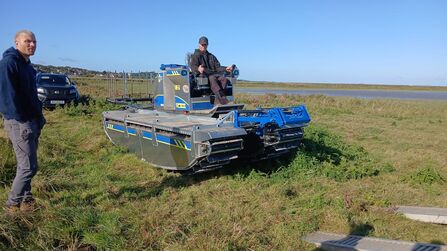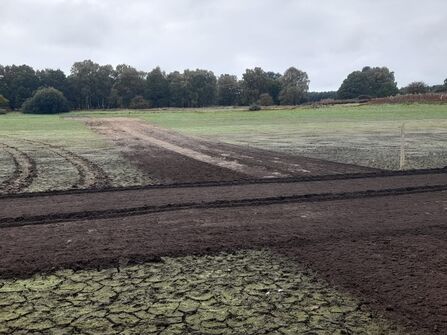October, caprice and unpredictable, can be a month of reflective tranquillity or rousing splendour. It is certainly the month of blustery storms, with cold fronts doing battle with warm air. Norfolk’s shoreline can be battered by immense bowling waves, having been drawn up by low pressure then excited by high winds. This October we have had one named storm - ‘Amy’ - and at the time of writing ‘Benjamin’ is on its way. If there seems to be a disproportionate number of Irish Gaelic names, this is because the Republic of Ireland Meteorological Office names the storms if they come in from the West. Of course, nearly all our storms come in from that direction. Autumn storms are nature’s great disrupters, and it is just what nature needs after a hot summer. Trees, still sailed with red and amber leaves, fight to stay rooted, with many an over-stretched silver birch losing the battle. The veteran oaks shrug disdainfully and discard a limb or two. An unimaginable trillion seeds are scattered far and wide, beneficiaries of the tempest’s anger. As the weather settles, ‘twitchers’ will search out stray migrant birds, flung off passage and far from their intended winter quarters.
For obvious reasons, we close our reserves prior to a storm warning taking affect. After a storm, it is the first job of staff and volunteers to check livestock and infrastructure for damage. The usual task is to clear fallen trees from the paths. The ring of a distant chainsaw is a familiar post-storm sound across our reserves. Although, this is nothing compared to the massive effect storms can have on our coastal reserves, with even life-threatening consequences. If low pressure and a high tide join with an easterly driven storm, the low-lying coastal reserves can be devastated by a storm surge, covering vast areas under several metres of seawater. In my time with Norfolk Wildlife Trust, the ‘Broads Team’ has been dispatched to NWT Cley Marshes twice to help with clear-up and repair. The storm surge over the 5th and 6th December 2013 was particularly destructive. The shingle ridge was torn apart and over a metre of water sat on the coast road. The warden, Bernard Bishop, had the North Sea lapping at his front door! The clear-up was some job, with garden furniture from the village wedged into hides, boardwalks lifted and tossed away, thick dark silt everywhere and wildlife habitats seriously damaged. But it recovered, and the improvement and realignment of the ‘New Cut’ drainage dyke, which was completed in 2023, will help future-proof the reserve. It won’t stop the sea coming in, but it will certainly ensure that it drains off as quickly as possible.




